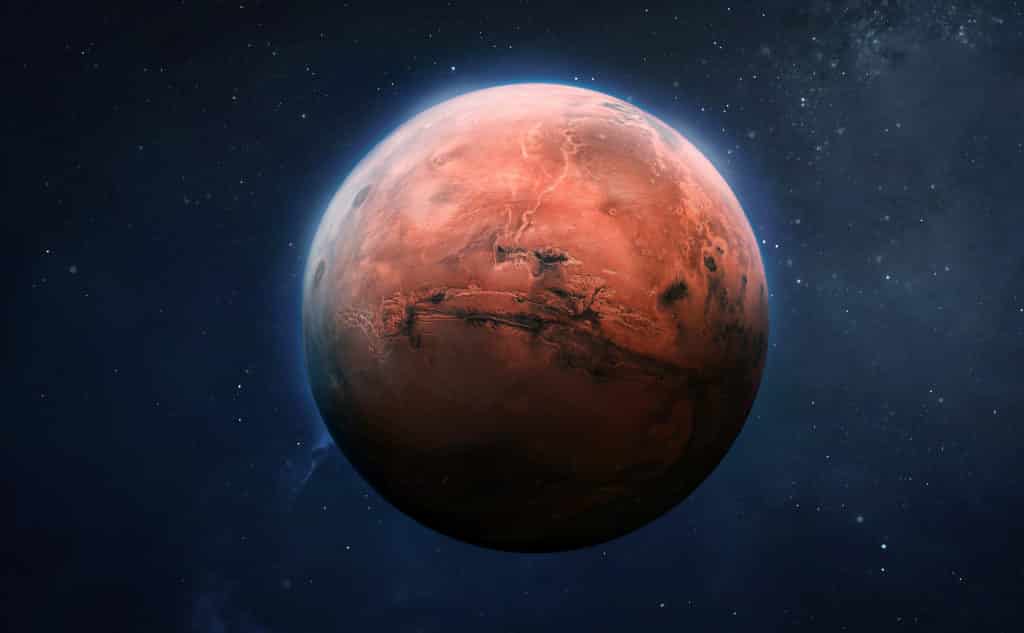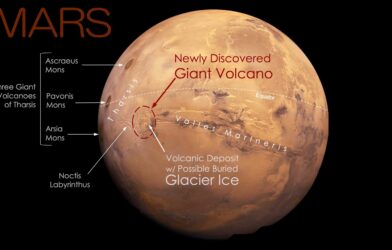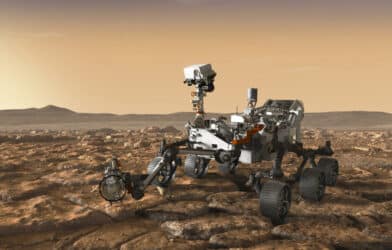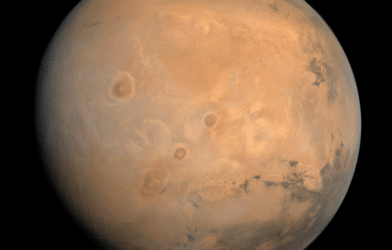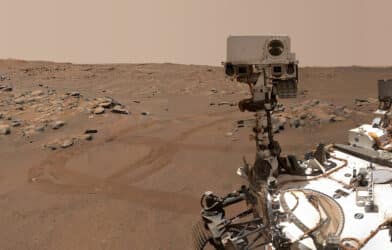An asteroid impact on Mars more than three billion years ago, similar to the one that wiped out the dinosaurs on Earth, triggered a “mega-tsunami” on Mars, according to new research.
Resulting waves loomed hundreds of feet high and travelled around 1,000 miles, carving out much of the surrounding landscape, according to scientists at the Planetary Science Institute in Tucson, Arizona.
The finding is based on an analysis of a 65-mile wide crater named Pohl in the northern lowlands. It adds to evidence the Red Planet was once “blue,” awash with oceans, rivers and lakes.
Pohl is “positioned above catastrophic flood-eroded surfaces” formed about 3.4 billion years ago, “during a period of northern plains oceanic inundation and below the younger of two previously hypothesized mega-tsunami deposits,” the authors write in their paper.
At the time Mars was being bombarded with space rocks suggesting “a marine impact
likely formed the crater,” authors say.
Scientists liken Pohl to the Chicxulub crater in the Gulf of Mexico, where a city-sized asteroid crashed 66 million years ago, killing off the non-avian dinosaurs. “The site’s location along a highland-facing lobe aligned to erosional grooves supports a mega-tsunami origin based on its position above and below rocks previously dated to this time,” their paper explains.
“Our mapping also shows Pohl’s knobby rim regionally represents a broader history of mega-tsunami modification. Our findings allow that rocks and soil salts at the landing site are of marine origin,” the team, led by J. Alexis P. Rodriguez, adds.
Mars was once a waterworld with raging torrents bigger than the Nile. NASA rover Perseverance is currently drilling for signs of ancient life.
Pohl is about 500 miles north east of where Viking 1 Lander (V1L) touched down in 1976, near the terminus of an enormous flood channel, Maja Valles. Its cameras imaged a boulder-strewn surface of elusive origin, which could be tracked back to the mega-tsunami.
Dr. Rodriguez and colleagues identified numerous signs of the long-ago collision where an ocean likely once sat. Previous research also proposed that an asteroid or comet impact within an ocean in the Martian northern lowlands may have caused a mega tsunami approximately 3.4 billion years ago.
The research pinpoints the location of the resulting impact crater for the first time. Dr Rodriguez and colleagues analyzed maps of Mars’ surface, created by combining images from previous missions to the planet.
Simulations showed craters with similar dimensions to Pohl were caused by either a six mile wide asteroid encountering strong ground resistance – releasing 13 million megatons of TNT energy – or a two mile wide one encountering weak ground resistance – releasing 0.5 million megatons.
Both formed craters measuring 65 mile in diameter and generated mega-tsunamis that reached nearly 1,000 miles from the centre of the impact site.
Analysis of the mega tsunami caused by the three kilometer asteroid impact indicated that this tsunami may have measured up to approximately 250 meters tall on land. It occurred within a region 200 meters below sea level, generated a crater with a temporary diameter of 60 miles, and led to a mega tsunami that was 200 meters high on land.
The study is published in the journal Scientific Reports.
